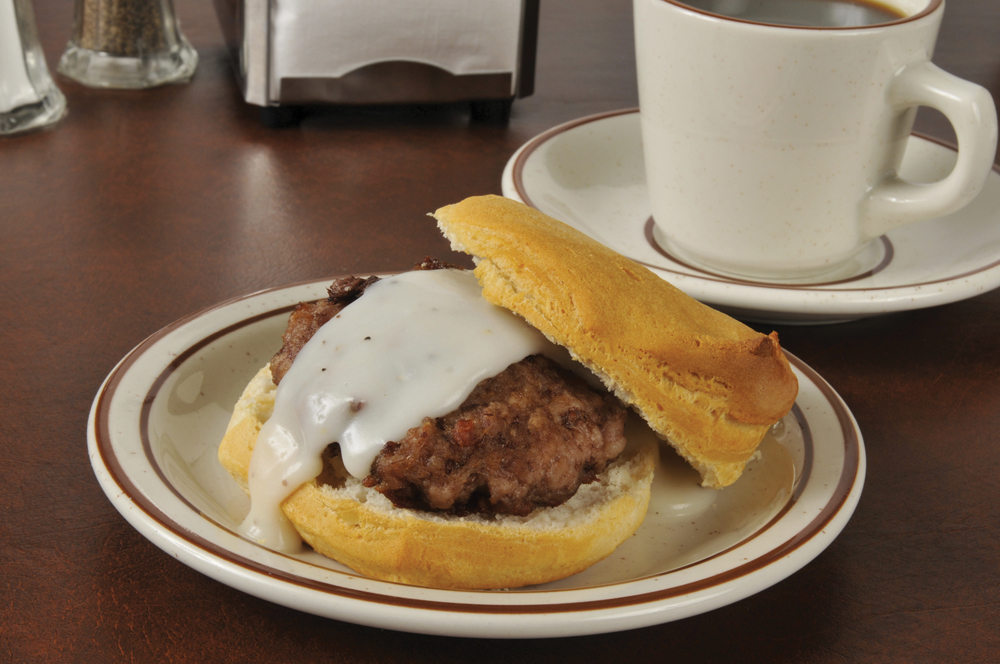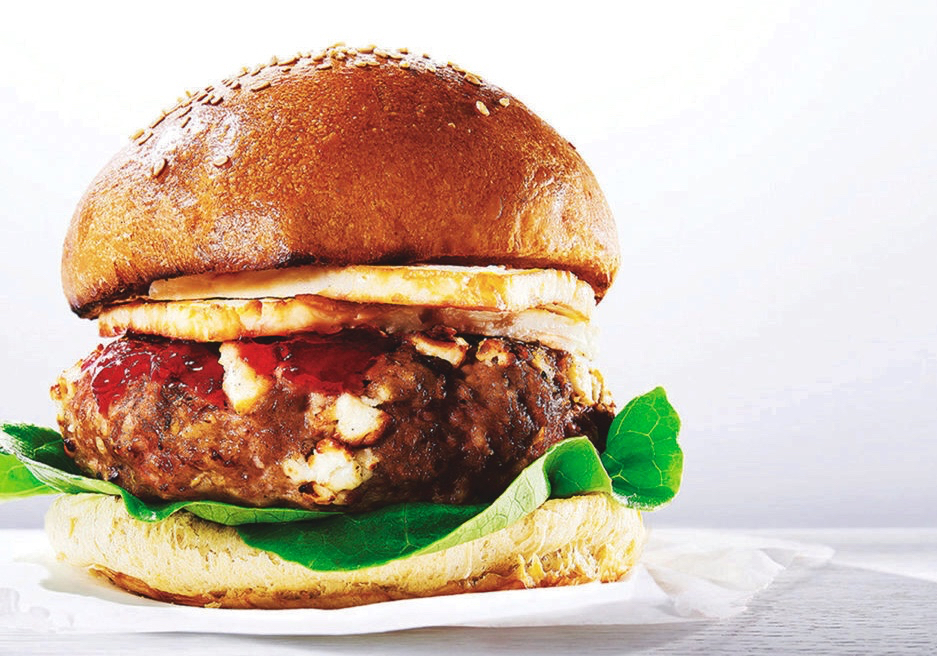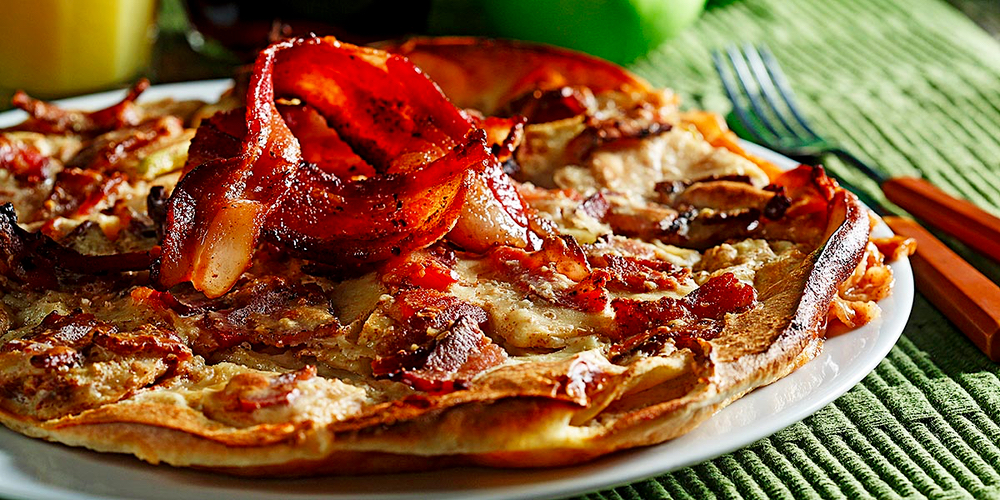They have biscuits and sausage gravy on the menu. I bet they know how to make it here,” my husband noted while we were travelling in a southern state. Sometimes restaurants cut up links instead of using ground meat, so the gravy is not flavoured throughout. As a server walked by with a steaming plate of biscuits and gravy, we could see that this restaurant used ground sausage.
When I first met this Indiana-raised guy 24 years ago, I never had heard of putting sausage gravy on biscuits. I’m sure I gave him the “you’re not from around here” look when he prepared it for me the first time. It was quite tasty, actually.
Read Also

Your best (and easiest) holiday dainty tray
Make-ahead recipes, store-bought goodies and co-operation with friends and family: Here’s how to throw together a stunning, low-stress tray.
He gave me a similar look when I made the Midwest staple “tater tot hotdish” for him. “Well, you better order the biscuits and gravy,” I said.
When the server arrived with a good-size bowl of sausage gravy and plate of biscuits, I looked at him with uplifted eyebrows. Eating a bowl of gravy at a restaurant was not my idea of “moderation.” He grinned. Evidently “they made it right.”
He even shared a little of his generous entree with me. It was quite tasty.
Sausage, bacon, ham, deli meats and red meat in general have received negative press in recent weeks. You might have seen scary headlines such as “death by bacon.”
As my husband contentedly chomped on biscuits and gravy, I thought about all the recent headlines. The World Health Organization recently placed processed meats in the same carcinogen category as cigarettes.
Specifically, the report said eating about two ounces of processed meat daily could raise your risk of getting colon cancer by 18 per cent. Keep in mind that your risk for colon cancer is fairly small.
Before you toss the bacon, let’s consider that this news is not brand new. You may recall that years ago, researchers showed that high-temperature cooking of red meats on the grill or in a frying pan can increase the production of carcinogenic compounds.
Should study results such as these make you drop meat from your menu? I hope not. Meat provides protein, iron, zinc and other nutrients. According to current recommendations from http://www.choosemyplate.gov, most adults need five to six ounces of protein daily, depending on the amount of physical activity they get.
However, I think we all know that “vitamin B” is not short for “vitamin bacon.” Moderation and balance are still keys to a healthful diet.
Most of us know someone who has or had colon cancer, so we want to take steps to reduce our risk. Research about diet and cancer is ongoing.
With this knowledge, we can take some steps in our kitchen. Therefore, moderate your cooking temperatures, avoid flare-ups on the grill and use a food thermometer to gauge doneness.
Instead of focusing on what not to do, let’s consider a few lessons about what to do to reduce our risk for cancer. Let’s focus on “more” instead of less. These tips are adapted from the American Cancer Society and the U.S. Dietary Guidelines for Americans.
- Get more fibre in your diet. Fibre fills you up and can help with weight management. Eat more dry edible beans, lentils, split peas and other fibre-rich foods.
- Enjoy more fruits and vegetables because they contain phytochemicals (cancer- fighting compounds). Have at least 4-1/2 cups of fruits and vegetables every day.
- Have more whole grain foods, such as whole grain bread, oatmeal and brown rice.
- Get more physical activity. Use the steps instead of the elevator, take walking breaks instead of snack breaks, and park farther from your destination. Go dancing. Wear a pedometer to chart your level of physical activity. Walk on a treadmill or go to a mall when the weather is cold or rainy.
If you are expecting a biscuits and sausage gravy recipe, you won’t find it from me. This native Midwesterner hasn’t perfected it yet.
I do know a good hotdish, though. Here’s a fibre-rich recipe chock full of beans, plus some ground beef and bacon. Enjoy a moderate intake of lean protein, such as meat, fish and poultry.
Calico Beans Hotdish
- 1/4 lb. bacon
- 1 lb. lean ground beef
- 1 medium onion, chopped
- 1/4 c. brown sugar
- 1/2 c. chili sauce
- 2 tbsp. vinegar
- 1 tsp. dry mustard
- 2 (16-oz.) cans baked beans
- 1 (15.5-oz.) can kidney beans, drained and rinsed
- 1 (15.5-oz.) can cranberry beans, drained and rinsed
- 1 (15.5-oz.) can navy beans, drained and rinsed
- 1 (15.5-oz.) can Great Northern beans, drained and rinsed
- 1 (15.5-oz.) can pinto beans, drained and rinsed
Fry bacon in skillet until crisp. Discard all fat. Drain bacon on paper towels. Brown ground beef and onion in same skillet. Drain beans (do not drain the baked beans). Combine all ingredients. Bake, covered, at 350 F for 45 minutes. For slow cookers: Combine all ingredients as given above in a large slow cooker. Cook on low for four to eight hours.
Directions for freezing: Put leftovers in a microwave/ovenproof casserole, cover and freeze. Reheat in a preheated 350 F oven to an internal temperature of 165 F, as measured with a food thermometer. Or cook in a microwave on high for four minutes, stir and continue heating until beans are of desired temperature.
Makes 20 servings. Each serving has 240 calories, 6 grams (g) fat, 17 g protein, 33 g carbohydrate, 9 g fibre and 720 milligrams sodium.















